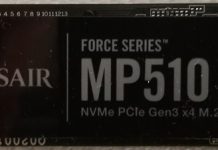|
|
Review: Intel P67, Sandy Bridge, and Native SATA |
The Intel Sandy Bridge processor architecture has been on
the horizon for quite some time, and it seems like ages ago that it was first
rumoured. It was known from the outset that the new CPU would have a more
advanced architecture than previous Intel CPU’s, it would be based on a 32nm
fabrication process, be more powerful, and at the same time consume less power.
It would also host a much more capable IGP, and much more advanced multimedia
features.
It was back in July that these rumours became a reality,
when the first engineering samples of the new processor began to land on tester’s
benches. For me, I have to admit I was rather disappointed, not with the
processor itself, but the fact that the Sandy Bridge parts would require a new
processor socket, and therefore a new motherboard and chipset, the 6 series
chipset to be exact. However, once details started to emerge that the mainstream
high performance P67 chipset would also host a brand new native 6Gbps SATA host
controller; I started to become much more optimistic about the new platform.
P67 is Intel’s second foray into a 2 chip solution, the P55
being the first chipset to do away with the North Bridge chip, and host the
memory controller and the x16 PCI Express controller in the CPU package itself,
with the South Bridge being renamed to PCH (Platform Controller Hub).
In most parts, P55 was a nice mainstream solution, but it most certainly had
its limitations. With only 16 PCIe2 lanes for graphics, and a further 8 PCIe2
lanes for the PCH, bandwidth was bound to become an issue for high end two card
graphic solutions. It was further compounded by the fact that although P55 had
PCIe2, these lanes were half duplex, meaning although a single lane had 5Gbps of
concurrent bandwidth, in reality it was half of this in the real world
(2.5Gbps), as the bandwidth was shared between send and receive.
Sandy Bridge and P67 is altogether different. It still has
16 PCIe2 lanes for graphics and 8 PCIe2 lanes for the PCH at 5Gbps, but this
time these run at full duplex, which means there is actually 10Gbps of
concurrent bandwidth.
In this article I will be taking a brief look at the Sandy
Bridge platform itself, and a more in depth look at the P67 PCH in regards to
SATA storage performance.
STOP PRESS
This article had been completed before the P67 SATA flaw
had been announced
by Intel. However, after careful consideration, I decided to publish the
article, as I think from the obtained results, there is no evidence of the
review system used in this article having been affected by the flaw in the P67
chipset.
Let’s head to the next page where we will take a closer
look at the Sandy Bridge platform.....

















